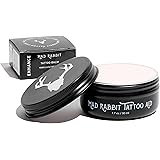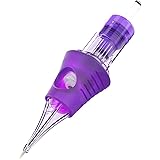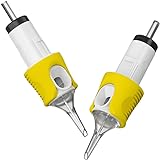Hand lettering can seem daunting at first. Many aspiring artists feel stuck. You see beautiful designs and think, “I can do that!” Then, you try, and it gets tricky. The good news is, you don’t need to start from scratch. The video above shares some fantastic hand lettering tips that truly feel like cheating. These simple techniques help you create custom lettering with ease. Let’s dive deeper into these beginner-friendly methods. They will unlock your creative potential and make your hand lettering journey much smoother.
Start Strong with Easy Hand Lettering Techniques
Getting started with hand lettering often feels overwhelming. You know what letters look like. But drawing them for custom designs is different. These methods provide a solid foundation. They give you a starting point. This removes the pressure of inventing styles from thin air. You can focus on adding your unique flair right away. It’s about building confidence with every stroke.
The “Build-a-Wall” Method: Tracing for Style
This technique is wonderfully versatile. It offers a simple way to begin your custom lettering journey. Start by typing any word you want to letter. Use the most basic typeface you can find. A default sans-serif font works perfectly. The video recommends using uppercase letters first. They often have simpler forms. This makes tracing easier for beginners. Of course, lowercase is an option if you prefer.
The core idea is to draw around the simple letterform. You are creating an outline. This outline then becomes your canvas for style. You maintain the letter’s legibility. Yet, you add your own creative touch. It’s like building a custom frame for a pre-made structure. This method ensures your letters remain clear and readable. You avoid common issues of distorted or illegible letterforms.
There are many exciting ways to stylize these outlines. One popular approach uses a shaky line. This creates a bold, punk rock aesthetic. It’s quick and effective. Another fun option is drippy letters. You draw an undulating line around the outside. Then, you add small “drips” as you go. This gives your letters a playful, oozing effect. A third variation involves wiggly lines without drips. This creates a cool, water-wavy, flowy, or even trippy style. Each of these styles builds on the same basic tracing principle. Experiment with different line qualities to find your favorites. You will discover many unique visual effects.
The benefit of this approach is immense. You don’t constantly worry about legibility. The underlying skeleton is already perfect. You just add the “meat to the bones.” This freedom allows for more creative exploration. You can focus solely on the decorative elements. It’s an excellent way to practice line work. You also learn about positive and negative space. These are crucial hand lettering skills.
Transforming Type: Custom Lettering from Digital Tools
You can take your tracing techniques even further. Modify the digital type before you trace it. This opens up endless possibilities. Digital art programs like Procreate or Adobe Fresco are ideal. They offer powerful manipulation tools. First, type your word using a chosen font. Then, convert this text layer to a pixel layer. This step is essential. It transforms the text into a manipulable image. Now, you have full control. You can distort and reshape it freely.
Manipulating Letterforms with Digital Tools
Once converted, use transformation tools like “skew” or “distort.” Play with the angles. You can give your letters dynamic slants. Imagine text that looks like it’s flying off the page. This adds incredible energy to your design. It moves beyond static, flat type. These tools allow for dramatic visual changes. They help convey emotion or motion in your lettering. Your letters can leap, dance, or even fall.
For more specific character, adjust individual letters. Select them one by one. Shift them around. Move them slightly. This creates an energetic, custom feel. You can overlap letters intentionally. This adds depth and connection. The subtle shifts make a huge difference. They transform generic type into something truly unique. This level of customization elevates your hand lettering. It gives your work a professional edge.
Crafting 3D “Whamified” Letters
The video demonstrates creating “whamified” 3D letters. This technique is straightforward. After modifying your base type, trace around the outside. Maintain a consistent proportion. Make the letters bolder and bigger. Let them overlap where appropriate. Once traced, duplicate this new outline layer. Shift the duplicated layer slightly down and to the side. This second layer acts as a guide. It forms the foundation for your 3D effect. Then, connect corresponding corners and edges. These connections create the illusion of depth. You get easy 3D letters. They look completely custom. This process is much faster than drawing 3D forms from scratch. The visual impact is significant. It makes your letters pop off the page.
This method truly transforms basic type. It gives a custom type treatment. The possibilities are endless. Try different angles and overlaps. Explore varied thickness for the 3D extrusion. You can add texture or color. These digital modifications are powerful. They allow for rapid iteration. You can quickly experiment with many custom lettering styles.
Designing Custom Type from Existing Fonts
Sometimes you find a font you almost love. It’s close to your vision. But you want a more custom version. You can use it as a powerful starting point. This method takes a beautiful font and makes it uniquely yours. It allows you to refine specific elements. This process ensures your final design is truly original. It’s a fantastic way to develop your personal style.
Refining and Connecting Letterforms
Convert your chosen font to a pixel layer. Now you have full creative control. Start moving elements around. Adjust the position of individual letters. For example, you might separate an ‘O’. Place it on its own layer for easier movement. Maybe you tuck it into another letter’s curve. Look for opportunities to connect letters. Can an ‘H’ flow into an ‘L’? This creates beautiful ligatures. It gives your lettering a more natural, handcrafted feel.
Push letters closer together to create a script look. You might need to adjust angles. This allows them to connect seamlessly. Even if lines don’t perfectly align, that’s part of the customization. You are making intentional design choices. Consider the overall meaning of your word. If it’s a question, integrate a custom question mark. Type one out and use it as a base. You don’t need to redraw everything. This iterative process is highly effective. It merges existing type with your creative vision.
Sketching and Refining Your Custom Lettering
Once you have a general layout, merge your layers. Reduce the opacity of this merged layer. Now, sketch on top. This is where your custom vision truly takes shape. Maybe the tail of an ‘R’ can swoosh. Perhaps it connects gracefully to another letter. Experiment with different curves and connections. Don’t be afraid to make aggressive strokes. You can always refine them later. The goal is to get your initial ideas down. This sketching phase is crucial for innovation.
Focus on creating elegant solutions. A simple connection between an ‘H’ and an ‘L’ can be transformative. Trace over your sketch. Make the design cohesive. Ensure all elements work together. If a letter needs more flair, add it. The video shows taking the tail of a ‘Y’. Rotating it into a fancy tail for an ‘R’ is genius. This creates visual balance. It ensures the whole piece flows beautifully. Every detail contributes to the overall aesthetic.
Adding Shape and Depth for a Finished Look
To finalize your custom lettering, consider a lock-up. This means enclosing it in a shape. Loosely draw a border around your design. This border can follow the contours of your letters. It also simplifies and cleans up the edges. A slight curve here or there adds elegance. This framing helps create a finished, polished look. It pulls all the individual elements together. The lock-up makes your custom lettering feel complete.
For added impact, give it a 3D effect. Duplicate your framed lettering. Drag one copy down slightly. Select the inside of the top layer. Erase the area within the frame. Then, connect the two layers. This creates dynamic depth. Close any small gaps. Merge the layers into one. You now have a unique type treatment. It started from existing type. But it is now fully customized. Experiment with colors and textures. Vintage-inspired brushes, like Riso brushes, can add a retro vibe. This technique makes your custom lettering truly pop.
Reviving Vintage Lettering for New Creations
Vintage lettering holds endless inspiration. Old board games, signs, or books are treasure troves. Finding a cool old lettering treatment can spark fresh ideas. Snap a picture of it. This image becomes your reference point. You don’t need to replicate it exactly. Instead, use it as a springboard. This method connects you to design history. It allows you to reinterpret classic styles. You create something new with a timeless feel.
Tracing and Adapting Vintage Letterforms
Bring your vintage reference into your digital art program. Reduce its opacity. Begin tracing over the letters. Don’t worry about perfect copies. Loosely sketch the forms. For instance, if you have an ‘S’, trace its general shape. You might only be able to use a few actual letters. That’s perfectly fine. The goal is inspiration, not exact duplication. Your sketches will be slightly different. This ensures your final piece is original. It carries the essence of the vintage style but with your personal touch.
What if your desired word has letters not in the reference? Get creative. Look at other letters within the vintage example. Can a part of an ‘H’ become an ‘I’? Could the bottom of an ‘S’ form a ‘Y’? Deconstruct the reference. Reassemble its parts into new letterforms. This is a design puzzle. It encourages unique problem-solving. It ensures stylistic consistency. Your newly formed letters will harmonize with the traced ones. This method helps maintain a unified aesthetic.
Adjusting and Refining for Cohesion
As you arrange your new letters, observe the original reference. Notice how letters fit together. Pay attention to the baseline. Vintage lettering often has dynamic baselines. Letters might subtly go up and down. Your initial traced letters might be too static. Fill in your sketched letters with solid shapes. Then, use these shapes to adjust baselines. Tweak individual letters. Rotate them slightly. Align them with the overall flow of the vintage style. This creates a much more authentic feel. It transforms a simple tracing into a cohesive design.
Experiment with variations. The video shows trying a lowercase-style ‘G’ that still feels uppercase. This breaks repetition. It adds visual interest. Refining your sketch is an iterative process. Scale up your refined sketch. Then, create a tighter, more polished version. Continue to adjust as you go. Add color loosely based on the reference. This helps visualize the final product. Reinterpreting vintage lettering is incredibly rewarding. It allows you to create unique, character-rich designs. These techniques make custom hand lettering accessible to everyone.
These hand lettering tips are powerful tools. They offer fantastic shortcuts for beginners. Use existing type as a guide. Transform digital letters. Find inspiration in vintage styles. Practice these easy hand lettering techniques. They will boost your confidence. You’ll create beautiful, custom lettering designs in no time. Keep experimenting with shapes, lines, and colors. Your unique hand lettering style awaits.











